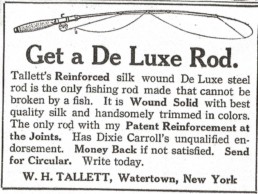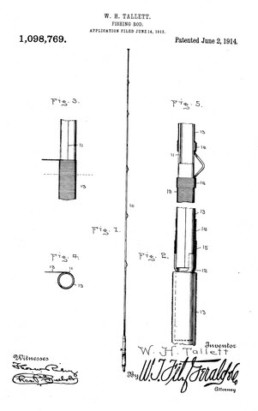By Jim Schottenham
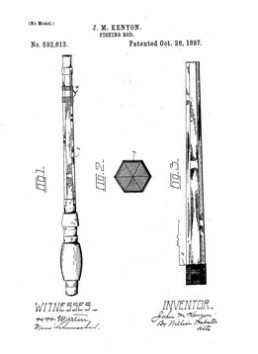
Mention rod wrapping to an angler this time of year and they will typically start thinking about repairing a loose guide or gift wrapping a rod for the holidays. There are, however, a few anglers that took rod wrapping to the extreme, as in literally wrapping the entire rod with silk thread. The first to do so was John M. Kenyon of Toledo, Ohio. His U. S. patent application for the process was submitted in January of 1897 and was issued number 592,613 on October 26 of that same year. In his submission, Kenyon described the merits of his wrapping, which included the use of light-colored thread, that when coated with varnish, would be transparent, allowing for the inspection and detection of any imperfections to the rod beneath the thread. The primary results of his mechanical wrapping process, according to Kenyon, were increased rod strength, elasticity, and protection from moisture that would weaken otherwise unprotected glued strips of split cane.
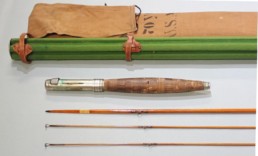

John M. Kenyon Silk Wrapped Fly Rod, c. 1897
Gift of Ted Ferree
1973.089.001
Kenyon’s patent was also applied to the Silkien series of rods sold by noted Post Mills, Vermont rod makers, and retailer, the T. H. Chubb Rod Co. In addition to the claims made by Kenyon, Chubb additionally touted the silk wrapping as a “holding ground” for the varnish, preventing chipping. Labeled with both the Chubb logo and the Silkien Patent, the rods came in numerous lengths and could be ordered constructed of six or eight-strip bamboo as well as Lancewood. Models 500 (bamboo) and 600 (lancewood) sold with Celluloid reel seats on the 9’ trout fly rods, while the remaining 12 models were offered with metal reel seats.
T.H. Chubb Silkien Model 500 Trout Rod, c. 1908
Gift of Sterling R. Bolling
1971.030.001
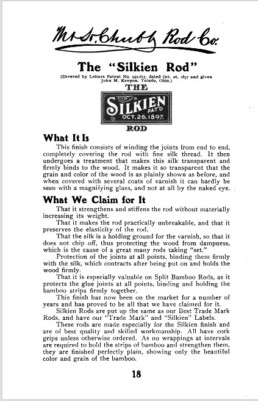
Seventeen years after Kenyon’s patent was issued, William H. Tallett, from Watertown, NY was granted a patent for what was essentially the same silk wrapping process, only applied to a sectional steel rod. With many of the same claims as Kenyon, including the resistance to moisture and increased rod strength, Tallett’s process differed from the 1897 patent, suggesting the application of a copper coating, applied electrically or otherwise to the steel rod prior to wrapping. The Tallett De Luxe rods were offered in both fly rod and casting models and earned the endorsement of Dixie Carroll, fishing editor of the National Sportsman magazine, and President of the American Anglers League.
It should be noted that neither Kenyon nor Tallett manufactured their own rods, instead using pre-made rods to apply their wrappings. Chubb was the only exception, making blanks they claimed were of the best quality and skilled workmanship, especially for this wrapping process.



